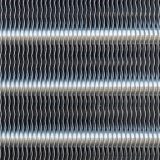How can consumers make sure they are getting energy-efficient appliances now that EnergySTAR has faded?
A joint effort between the EPA and the Department of Energy, the EnergySTAR program is estimated to have saved $500 billion in energy costs and 4 billion metric tons of greenhouse gas emissions since 1992.
The blue EnergySTAR label was only offered to appliances and homes that met their product-specific high standards. Now, with the EnergySTAR label disappearing, consumers should know how to still make energy-efficient decisions in their homes.
Another label that appears on appliances is the yellow Energy Guide, managed by the Federal Trade Commission. It lists the estimated annual energy cost ($) and electricity use (kilowatt/hour), and shows a scale comparing the product to similar models. While useful for reference, it’s important to remember that these are based on national averages, and your costs may increase if you use the appliance more or live in an area with higher average living costs.
The Consortium of Energy Efficiency places energy-efficient appliances on a Tier List from 1 through 4, with Tier 1 being equivalent to the minimum EnergySTAR standards, and Tiers 2, 3, and 4 showcasing increasing exceptional performance. While they don’t provide stickers on products, CEE has an online directory, where you can check the tier rating once you find an appliance you like and are thinking of buying.
Finally, the U.S Department of Energy has a guides on saving energy and electrical costs in your home. These include tips for buying new appliances, such as looking for blue-flame gas stoves or testing the seal on fridge doors. There’s advice for improving the energy usage of your current appliances, like adjusting your thermostat when away from home. Even regular cleaning of appliances can ensure they are working as efficiently and safely as possible.
A 2022 study by researchers at San Jose State University found that the most impactful way for consumers to cut energy usage and costs is by changing their own behavior in terms of energy consumption choices based on household profile, no matter what equipment they have.
Although it’s discouraging to see the EnergySTAR program potentially cut, it’s valuable for households to make an effort to improve their energy usage or buy energy-efficient appliances, in whatever steps possible for them. [DHC]





